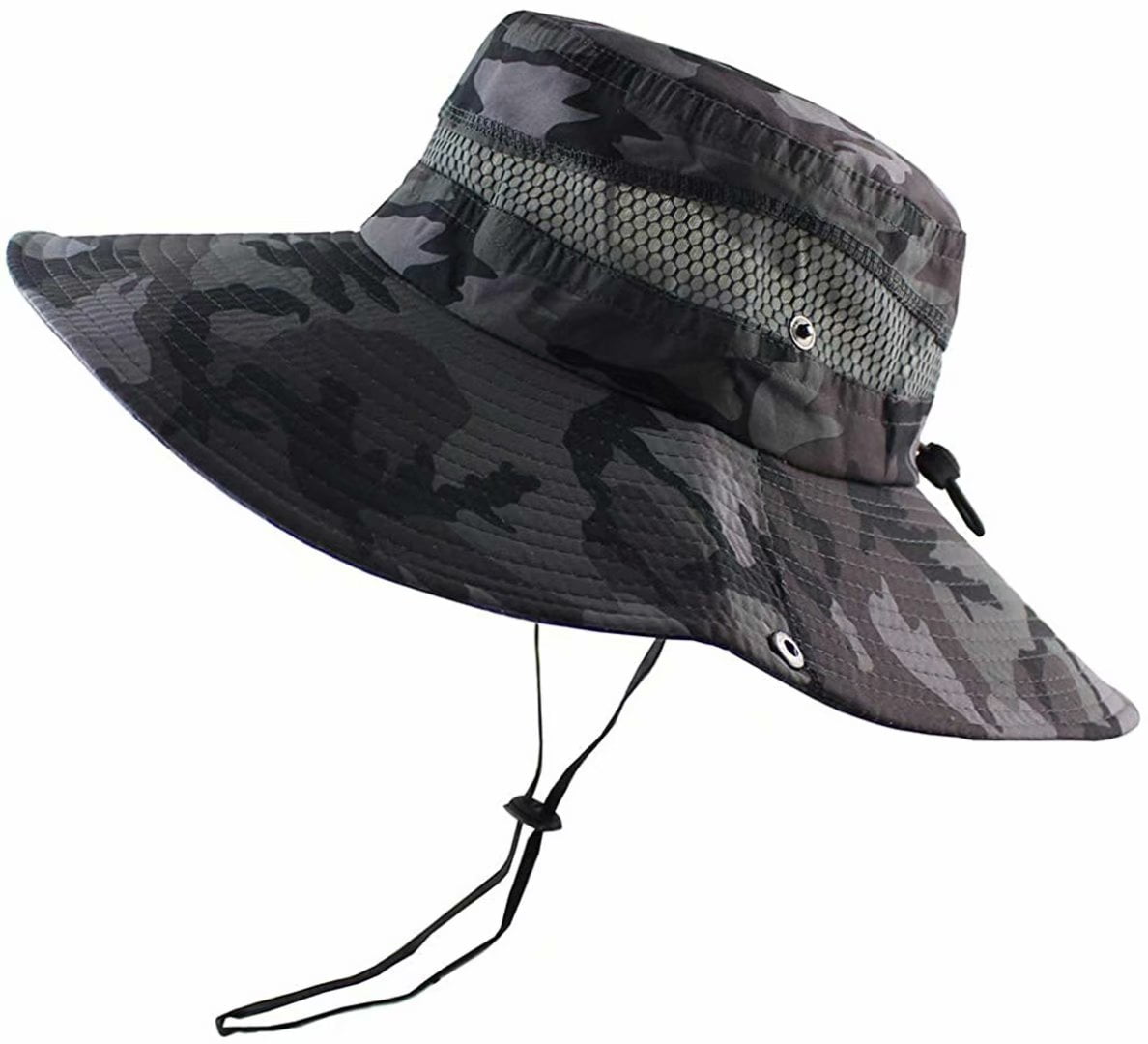

You don’t want a fishing hat that feels stifling. When you’re in the heat and humidity under the sun, you’re going to sweat. Ventilation is key for a comfortable fishing hat fit. If you’re out on the boat and the wind picks up, you don’t want to lose your fishing hat. Also, for securing the hat in rough conditions. These are important for getting a good fit. Many fishing hats come with adjustable straps and cords. Make sure you take accurate measurements or buy a size you know is going to fit. Even with adjustable straps, that doesn’t make the fit much better. Many hats are sized for smaller head sizes. If you have a history of problems with hat sizing, double check on this before you commit to buy. One-size-fits-all doesn’t work for everyone. Many cheaper fishing hats come in a single size only. Hat sizing is a difficult prospect for some people. Make sure your fishing hat has optimal coverage to keep you safe. That in turn means you’re protecting yourself from long-term risks like skin cancer. You’re protecting yourself from overheating and sunburns. It may not be the most cutting-edge fashion statement, but it’s not supposed to be. The wider the brim of the fishing hat, the greater the UV protection. This rating will protect you from about 98% of UVA and UVB rays. A hat with a UPF rating of 50 plus is good. This is how able it is to keep you protected from ultraviolet radiation.

UPF stands for ultraviolet protection factor. Yes, it can keep you cool, but it’s definitely for more than that.Ī good fishing hat should have a high UPF rating. You need maximum protection for your head. Wearing a hat could literally save your life. You have direct sun on your face, plus reflected sun off the water to worry about. A lifetime of being out in the sun doing activities like this can take its toll. Of course men and women we can both fish, but men statistically do it more often. When you get to 6 basal cell carcinomas, 20% of patients are women while about 80% are men. As the number of diagnosed BCC’s goes up, the gender gap between them becomes staggering. Over 4 million Americans are diagnosed with basal cell carcinoma every year in the US. Statistically, men are far more likely to develop skin cancer than women.


 0 kommentar(er)
0 kommentar(er)
